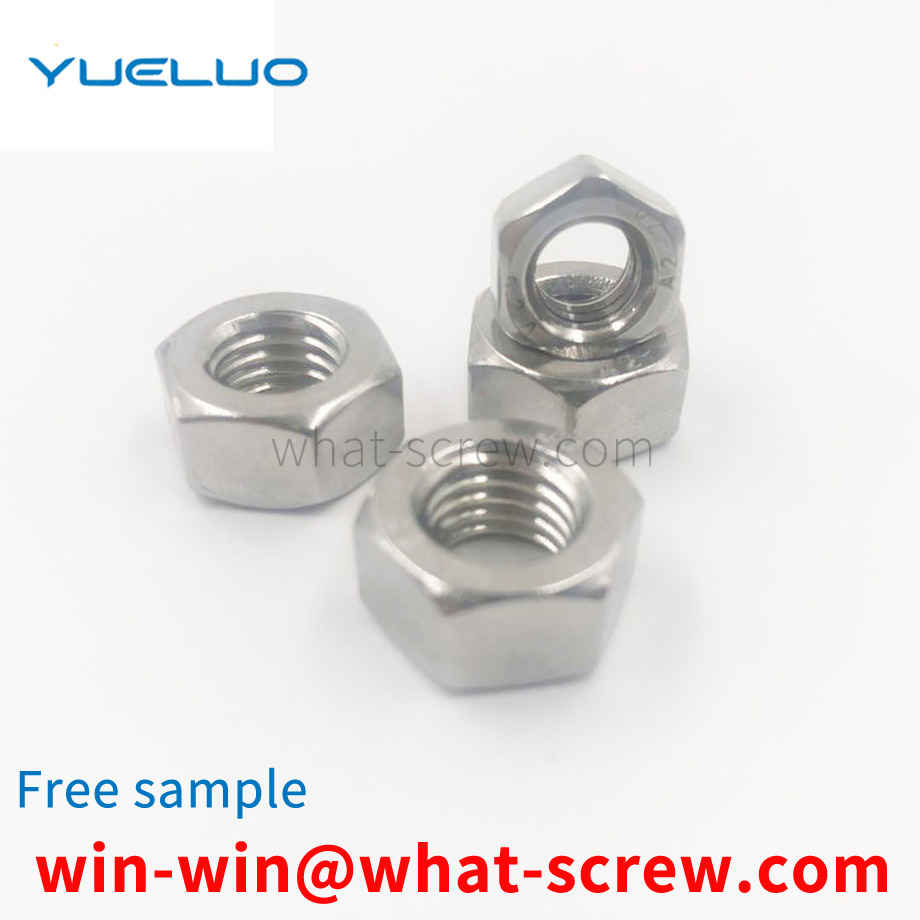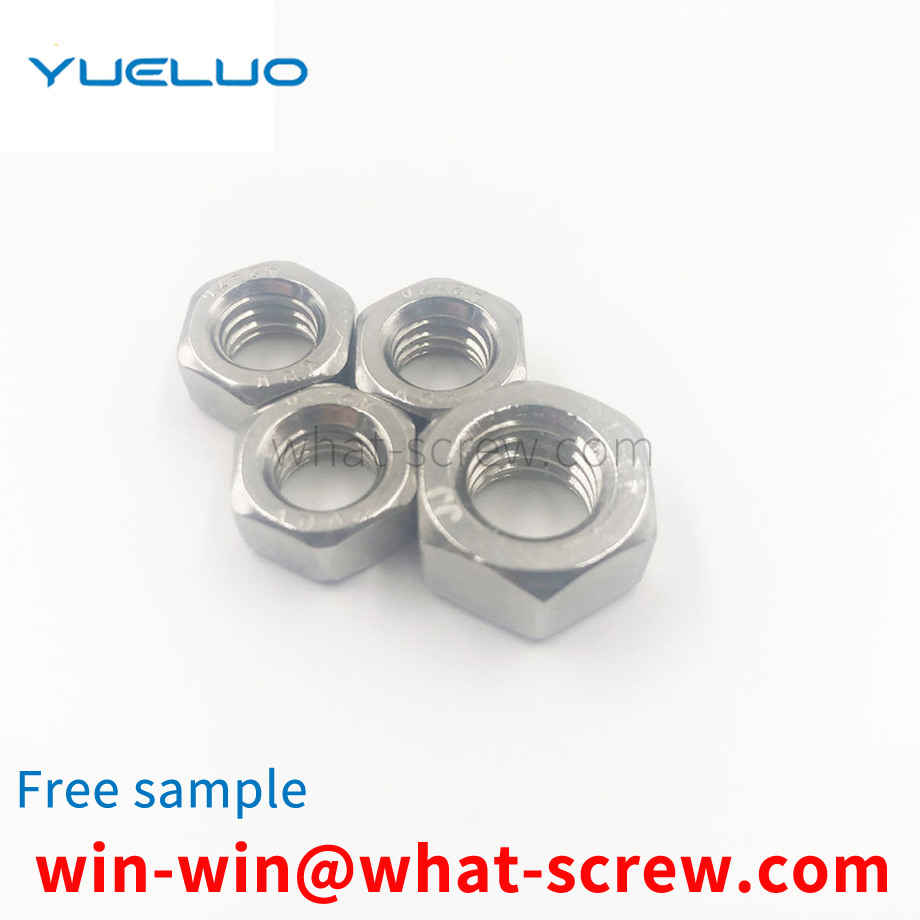As we all know, when installing the outdoor unit of the air conditioner, most of the installers need to hang it on the outer wall. When tightening the machine foot screws, they all need to lean out of the window or climb out the whole person, and use a wrench to tighten it. . Therefore, it is difficult for the installer to operate, and it is easy to drop the installation materials such as screws and nuts, which is not only a waste of materials, but also easy to hurt personnel. The purpose of Guangdong Yueluo Hardware Industry Co., Ltd. is to solve the above problems, and provide a safe and labor-saving air conditioner outdoor unit machine foot screw installer that the installer does not have to lean out of the window or climb out of the room, and the installation materials are not easy to fall.
Stud bolts are manufactured in accordance with GB897-GB901 standards, the materials used are: Q235, 45#, 40Cr, 35CrMoA, Q345D, the specifications are: M3mm-M100mm, and the length can be customized according to user needs. High strength stud bolts, materials are 35#, 45#, 35CrMoA, 25Cr2MoV, 304, 316, 304L, 316L, 2H, 2HM, B7, B7M, B16, B8, 8, B8M, 8M, widely used in electric power, chemical industry , oil refining, valves, railways, bridges, steel structures, automobile and motorcycle accessories and other fields: generally used in mining machinery, bridges, automobiles, motorcycles, boiler steel structures, pendant towers, long-span steel structures and large buildings, etc. . Representation method of stud bolts: General stud bolts are expressed as: M12×100 GB 901-88 (standard) 35#/35# (material) 8.8 grade/8 grade (modulation grade) means: diameter = 12mm length = 100mm GB 901-88 adopts the national standard (of course, the industry standard can also be used as needed) stud bolt standard: GB 900-1988 Introduction to stud bolts Stud bolts save time and cost All stud bolt structures do not require drilling, Steps such as punching, threading, riveting, threading and finishing continue to expand the application potential of structural design, high current and small penetration. Therefore, welding to very thin sheets is possible. The workpiece for stud welding must be welded from one side. Can be soldered in all positions, with the help of extenders on vertical bulkheads that can be restricted. Since it is welded for a short time and there is little deformation after welding, no trimming is required. Because the welded structure does not require drilling, there is no leakage. The joint can achieve high strength, that is, the joint strength of stud welding is greater than the strength of the stud itself. How to install studs Good economy The advantage of other welding methods is the welding power. For mass-produced workpieces, standard studs are low cost. There are various types of equipment and welding torches, and the acquisition cost of equipment is relatively low. According to the product, it can be made into a multi-station automatic welding machine, or a high-precision gantry-type CNC automatic welding machine. Stud welding has high quality reproducibility and low rejection rate. However, in the application of stud welding, it should be noted that, like other fusion welding, there are certain restrictions on the carbon content in the steel. For structural steel studs, welding should be performed according to the recommended combination of stud material and base metal. There will be infusibility with the base metal. Combinations of stud material and base metal outside the recommended range shall be tested to determine the weldability and the product design requirements of the anchor bolt for the possibility of relevant inspection and evaluation.
Ordinary snap-type retaining rings have ears on their structure, which cause interference with the inner parts. If the ears are not provided, it is very troublesome to disassemble. For the very demanding aerospace field, ordinary snap rings cannot meet their requirements.
Common fastening screws include self-tapping screws, fine-pitch drywall screws, traditional wood screws, and fiberboard screws. The following are the characteristics of commonly used screws, everyone should choose them reasonably. Self-tapping screws The correct application of self-tapping screws should be used for the fastening and connection of metal materials with pre-drilled holes. It has the function of automatically tapping out the internal thread on the metal body, and can complete the thread engagement with it to play a tightening role. However, due to its high thread bottom diameter, when it is used in wood products, the cut into the wood will be shallower; and because the thread pitch is small, there is less wood structure between every two threads. Therefore, it is unreliable and unsafe to use self-tapping screws for wood mountings, especially loose wood. Drywall Screws The proper use of fine-pitch drywall screws is for fastening and joining between metal studs and plasterboard. It suffers from similar drawbacks as self-tapping screws when used on wood mountings. Moreover, due to the large diameter of the head of the dry-wall screw, the embedding of the head is poor, and it is easy to cause unevenness between the head of the screw and the surface of the mounting part after installation. Traditional wood screws Before using traditional wood screws, pre-drilling holes are required on the wooden mounting parts, otherwise it is easy to cause wood cracking. In addition, since the traditional wood screws are not heat-treated, the use of electric tools can easily cause the groove shape to be damaged, and manual installation is very laborious. Fiberboard screws are relatively new types of wood screws, suitable for power tool installation. However, due to its relatively simple thread design, it still cannot effectively solve the stubborn problem of easy cracking when used on hardwood, and it does not have any advantages in screwing speed and screwing torque. [2]
Thread Code Broadcast Coarse Thread Series UNC Fine Thread Series UNF Extra Fine Thread Series UNEF Fixed Pitch Series UN Marking Method Broadcast Marking Method: Thread Diameter - Number of Threads per Inch Serial Code - Accuracy Grade Example: Coarse Thread Series 3/8—16 UNC— 2A Fine pitch series 3/8—24 UNF—2A Extra fine pitch series 3/8—32 UNEF—2A Fixed pitch series 3/8—20 UN—2A The first digit 3/8 indicates the outer diameter of the thread, in inches , to convert to metric unit mm, multiply by 25.4, that is, 3/8×25.4=9.525mm; the second and third digits 16, 24, 32, 20 are the number of teeth per inch (the number of teeth on the 25.4mm length); The text code UNC, UNF, UNEF, UN after the third digit is the series code, and the last two digits 2A are the precision grade. UNC: Unified Coarse Thread.
We have many years of experience in the production and sales of screws, nuts, flat washers, etc. The main products are: spherical screws, Phillips socket bolts, blackened flat washers, non-standard special bolts and other products, we can provide you with products suitable for you fastener solutions.



















 Service Hotline
Service Hotline




